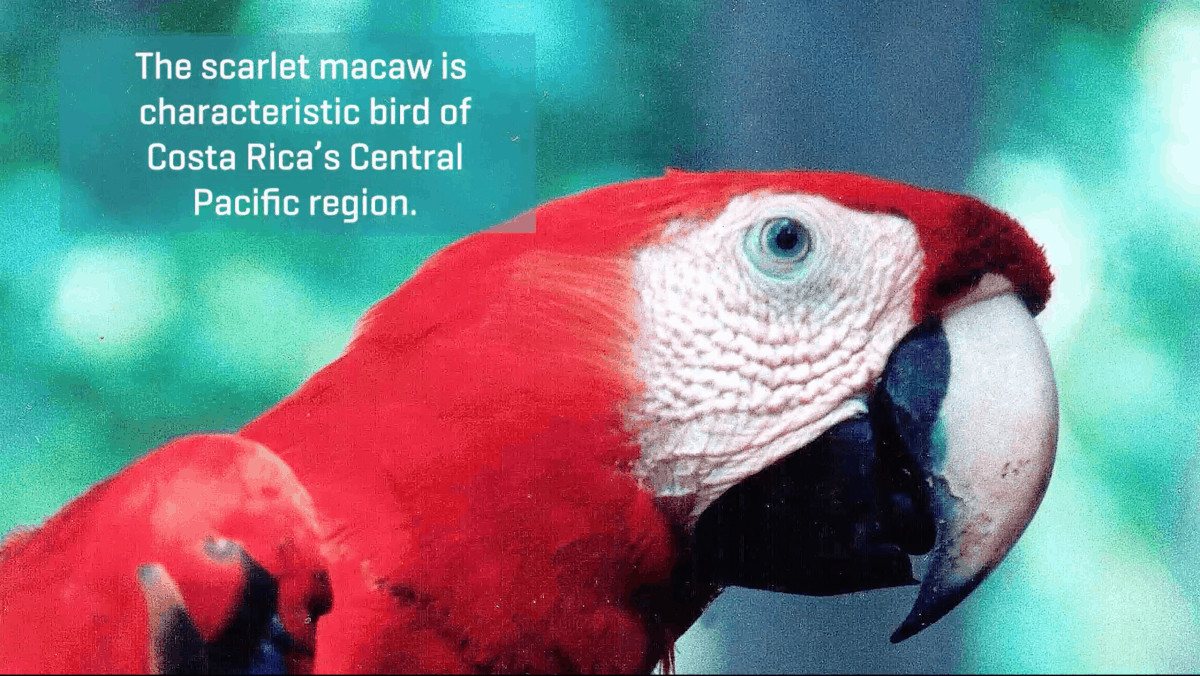Costa Rica is home to approximately 1,600 scarlet macaws or ara macaos, a population that is distributed throughout Central Pacific Conservation Area (600), the Osa Conservation area (1200), the Tempisque Conservation Area (23) and La Amistad Conservation Area (12). Most of these macaws are located in protected areas, though they also live near towns, farms and tourism destinations.
Such is the case of the scarlet macaws near the Hotel Punta Leona, located in the Central Pacific near Jacó, Puntarenas. The hotel has been working with biologist Christopher Vaughan on a conservation project since 1994. The initial conservation project began in 1990 when Dr. Vaughan began studying how the scarlet macaws behaved around the area, what their habitats are like, what they feed on, and the surrounding community’s consciousness of the issue.
Vaughan determined that the scarlet macaws eat more than 40 different species of native plants in the area, and studied their nesting process. He found that the birds take 70 to 75 days with their babies, though they do not stay in the nests the entire time. They tend to nest between tree branches and trunks.
The nesting season is from December to February, and hatching takes between 22 and 25 days.
After joining forces with Punta Leona in 1994, Vaughan found 18 natural nests within the hotel’s grounds and traced out the flying routes of the scarlet macaws as well as the decrease of macaws per year, which was between 8 and 10. In the face of this worrisome situation, Punta Leona enlisted more than 300 of their employees to help in the conservation of the macaws as well as educating the community about the issue, given that another threat to the birds was laperos, people who steal the scarlet macaws to sell them.
The project began to create artificial nests out of fiberglass and wood to help macaws whose nests had been destroyed. The hotel also placed cameras within the artificial nests to monitor the scarlet macaws at all times. You can watch, too, by clicking here.
During a recent visit to the project area, The Tico Times learned that the region has seen an increase in scarlet macaw births, a reduction of laperos activities, and the active role of a community that has focused on scarlet macaw conservation of the scarlet macaws. The community has developed an education program where the children in schools are taught about scarlet macaws so that they can then teach their parents about it.
Due to Vaughan and Punta Leona’s efforts, the Public Education Ministry (MEP) has gotten involved in the process.
As part of the conservation efforts, Vaughan and Punta Leona have also encountered a new challenge for the conservation of this population: climate change. According to project leaders, this is one more reason for them to continue working hard for the conservation of the scarlet macaws.






